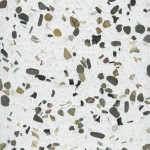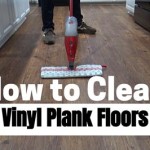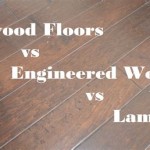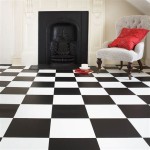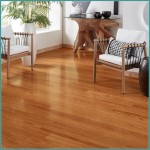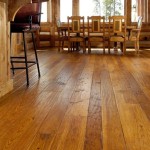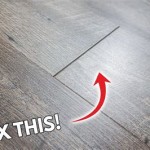Everything You Need To Know About Vinyl Flooring Rolls in the USA
Vinyl flooring rolls, also known as sheet vinyl, offer a durable, versatile, and relatively cost-effective flooring solution for a wide range of applications in the United States. This comprehensive overview will delve into the various aspects of vinyl flooring rolls, covering their composition, types, advantages, disadvantages, installation process, maintenance requirements, and market trends in the USA.
Vinyl flooring rolls are manufactured from synthetic materials, primarily polyvinyl chloride (PVC). The manufacturing process typically involves layering different materials to create a product with both aesthetic appeal and functional properties. A typical construction includes a backing layer for stability and cushioning, a core layer for added durability, a printed design layer that provides the visual appearance of the flooring, and a protective wear layer on top to resist scratches, stains, and fading.
The wear layer’s thickness significantly influences the flooring's durability and suitability for different traffic levels. Thicker wear layers are more resistant to wear and tear and are best suited for high-traffic areas such as commercial spaces and busy households. In contrast, thinner wear layers are more appropriate for residential areas with lighter foot traffic.
Vinyl flooring rolls are available in a wide array of designs, patterns, and colors, replicating the look of natural materials like wood, stone, and tile. This aesthetic flexibility makes them a popular choice for homeowners and businesses seeking to achieve a desired look without the higher cost and maintenance associated with natural materials.
Types of Vinyl Flooring Rolls
Vinyl flooring rolls are broadly categorized based on their construction and intended use. Understanding these different types is crucial for selecting the most appropriate flooring for a specific application.
Homogeneous Vinyl: This type features a single layer of material throughout the entire thickness of the flooring. The design and color are consistent from top to bottom. Homogeneous vinyl is exceptionally durable and resistant to wear, making it ideal for high-traffic commercial environments such as hospitals, schools, and retail stores. Its uniform construction also ensures that the flooring retains its appearance even with heavy use and abrasion.
Heterogeneous Vinyl: This type consists of multiple layers, each serving a specific purpose. A typical heterogeneous vinyl roll includes a backing layer for stability, a core layer for added durability, a printed design layer, and a protective wear layer. Heterogeneous vinyl offers a wider range of design options compared to homogeneous vinyl, and it can be manufactured with varying wear layer thicknesses to suit different traffic levels. This versatility makes it a popular choice for both residential and commercial applications.
Inlaid Vinyl: Inlaid vinyl features a design that is embedded into the wear layer, creating a textured surface that is both visually appealing and slip-resistant. This type of vinyl is often used in areas where safety is a primary concern, such as kitchens, bathrooms, and healthcare facilities. The inlaid design also enhances the durability of the flooring, as the pattern is less likely to wear away over time.
Cushioned Vinyl: This type incorporates a foam or felt backing layer that provides added comfort underfoot and reduces noise transmission. Cushioned vinyl is a popular choice for residential applications, particularly in bedrooms and living rooms, where comfort and quiet are desired.
Advantages of Vinyl Flooring Rolls
Vinyl flooring rolls offer several advantages that contribute to their widespread popularity in the USA.
Durability: Vinyl flooring rolls are highly resistant to scratches, stains, and water damage, making them a durable flooring option for high-traffic areas and moisture-prone environments. The protective wear layer provides added resistance to wear and tear, extending the lifespan of the flooring.
Water Resistance: Vinyl is inherently waterproof, making it an excellent choice for bathrooms, kitchens, and laundry rooms where spills and moisture are common. Unlike natural materials like wood and stone, vinyl is not susceptible to water damage and will not warp, rot, or mildew when exposed to moisture.
Cost-Effectiveness: Vinyl flooring rolls are generally more affordable than natural materials like wood, stone, and tile, making them a budget-friendly flooring option for homeowners and businesses. The lower cost, combined with the flooring's durability and low maintenance requirements, makes it a cost-effective choice over the long term.
Easy Maintenance: Vinyl flooring rolls are relatively easy to clean and maintain. Regular sweeping or vacuuming, along with occasional damp mopping, is typically sufficient to keep the flooring looking its best. Vinyl's stain-resistant properties also make it easy to remove spills and stains.
Design Versatility: Vinyl flooring rolls are available in a wide range of designs, patterns, and colors, offering a great deal of design flexibility. They can mimic the look of natural materials like wood, stone, and tile, allowing homeowners and businesses to achieve a desired aesthetic without the higher cost and maintenance associated with natural materials.
Comfort: Some vinyl flooring rolls feature a cushioned backing layer that provides added comfort underfoot. This cushioning can reduce fatigue and noise transmission, making it a comfortable and quiet flooring option for residential applications.
Disadvantages of Vinyl Flooring Rolls
While vinyl flooring rolls offer many advantages, they also have some potential drawbacks to consider.
Environmental Concerns: The production of vinyl flooring involves the use of PVC, a synthetic material derived from petroleum. The manufacturing process can release harmful emissions into the air and water, and the disposal of vinyl flooring at the end of its lifespan can contribute to landfill waste. However, there are efforts to recycle vinyl flooring and develop more sustainable manufacturing processes.
Indentation: While vinyl flooring is generally durable, it can be susceptible to indentation from heavy furniture or appliances. Using furniture pads and avoiding dragging heavy objects across the floor can help prevent indentation.
Repair Challenges: Repairing damaged vinyl flooring rolls can be difficult, especially if the damage is extensive. Small tears or cuts may be patched or repaired with a seam sealer, but larger areas of damage may require replacing the entire sheet.
Perceived Quality: While vinyl flooring can mimic the look of natural materials, it may not have the same perceived quality or value as wood, stone, or tile. Some homeowners may prefer the authenticity and natural beauty of these materials, despite their higher cost and maintenance requirements.
VOC Emissions: Some vinyl flooring products may emit volatile organic compounds (VOCs), which can contribute to indoor air pollution. Choosing low-VOC or VOC-free vinyl flooring can help minimize this risk. Look for products that are certified by organizations such as FloorScore or GreenGuard.
Installation Process of Vinyl Flooring Rolls
The installation of vinyl flooring rolls typically involves several steps to ensure a proper and long-lasting result. While it is possible for homeowners to install vinyl flooring rolls themselves, professional installation is often recommended, especially for larger or more complex projects.
Subfloor Preparation: The subfloor must be clean, level, and dry before installing vinyl flooring. Any imperfections in the subfloor, such as cracks or unevenness, should be repaired to prevent them from telegraphing through the vinyl and causing damage. This may involve patching holes, filling cracks, and sanding down high spots. A self-leveling compound can be used to create a smooth and even surface.
Acclimation: Allowing the vinyl flooring to acclimate to the room temperature for at least 24 to 48 hours before installation is recommended. This allows the vinyl to expand or contract, which helps prevent buckling or warping after installation.
Cutting and Fitting: The vinyl flooring is carefully measured and cut to fit the room, leaving a small gap around the perimeter for expansion. Precise cutting is essential for achieving a seamless and professional-looking installation. A utility knife or specialized vinyl flooring cutter is typically used for this purpose.
Adhesive Application: A suitable adhesive is applied to the subfloor using a trowel. The type of adhesive will depend on the type of vinyl flooring and the subfloor material. It is important to follow the adhesive manufacturer's instructions carefully.
Rolling and Seaming: The vinyl flooring is carefully rolled out over the adhesive-covered subfloor, ensuring that it is properly aligned and smooth. A floor roller is used to press the vinyl firmly into the adhesive and remove any air bubbles. If multiple sheets of vinyl are required, they are seamed together using a heat welding technique or a seam sealer.
Finishing Touches: After the vinyl flooring is installed, baseboards or quarter-round moldings are installed around the perimeter of the room to conceal the expansion gap and provide a finished look. The flooring is then cleaned to remove any adhesive residue.
Maintenance Requirements for Vinyl Flooring Rolls
Maintaining vinyl flooring rolls is relatively simple, contributing to their appeal. Regular cleaning and preventive measures can help extend the flooring's lifespan and maintain its appearance.
Regular Cleaning: Sweep or vacuum the floor regularly to remove dirt, dust, and debris. Use a soft-bristled broom or a vacuum cleaner with a floor brush attachment to avoid scratching the surface.
Damp Mopping: Damp mop the floor with a mild detergent and warm water as needed. Avoid using harsh chemicals or abrasive cleaners, as they can damage the wear layer. Ensure the mop is wrung out well to prevent excess water from seeping into the seams.
Spill Cleanup: Clean up spills immediately to prevent staining. Use a clean cloth or paper towel to blot the spill, working from the outside in. Avoid rubbing, as this can spread the stain.
Furniture Protection: Use furniture pads under the legs of heavy furniture to prevent indentation. Avoid dragging heavy objects across the floor, as this can scratch or damage the surface.
Avoid Harsh Chemicals: Avoid using harsh chemicals, abrasive cleaners, or solvent-based cleaners on vinyl flooring. These products can damage the wear layer and dull the finish.
Seam Maintenance: Inspect the seams regularly for any signs of damage or separation. Apply a seam sealer if necessary to prevent water from seeping under the flooring.
Market Trends in the USA
The vinyl flooring market in the USA is influenced by various factors, including consumer preferences, technological advancements, and economic conditions. Some notable trends include:
Growth in Residential and Commercial Sectors: Vinyl flooring remains a popular choice in both residential and commercial settings due to its durability, affordability, and design versatility. The demand for vinyl flooring is expected to continue to grow in the coming years, driven by increasing construction activity and renovation projects.
Emphasis on Sustainability: There is a growing demand for sustainable and eco-friendly flooring options. Manufacturers are responding by developing vinyl flooring products that are made from recycled materials, have low VOC emissions, and are recyclable at the end of their lifespan.
Advancements in Design and Technology: Advancements in printing and manufacturing technologies have enabled the creation of vinyl flooring rolls that closely mimic the look of natural materials like wood, stone, and tile. This has expanded the design possibilities for vinyl flooring and made it an even more attractive option for homeowners and businesses.
Increase in Wear Layer Thickness Options: Manufacturers are offering a wider range of wear layer thicknesses to cater to different traffic levels and application requirements. Thicker wear layers provide greater durability and are suitable for high-traffic commercial environments, while thinner wear layers are more appropriate for residential applications.
Popularity of Wood-Look and Stone-Look Vinyl: Vinyl flooring rolls that mimic the look of wood and stone are particularly popular in the USA. These products offer the aesthetic appeal of natural materials without the higher cost and maintenance associated with them.
Everything You Need To Know About Vinyl Flooring Tarkett

How To Lay Sheet Vinyl Flooring

Types Of Vinyl Flooring The Home Depot

L And Stick Vinyl Flooring All Things To Know Before Lx Hausys

What Is Sheet Vinyl Flooring It Made Of America

Types Of Vinyl Flooring The Home Depot
Ultimate Guide To Sheet Vinyl Mannington

Flooring Underlayment Guide

Adhesive Vinyl Flooring 4 Ways To Install Planeo

A Beginner S Guide To Installing Vinyl Plank Flooring Dumpsters Com
Related Posts


